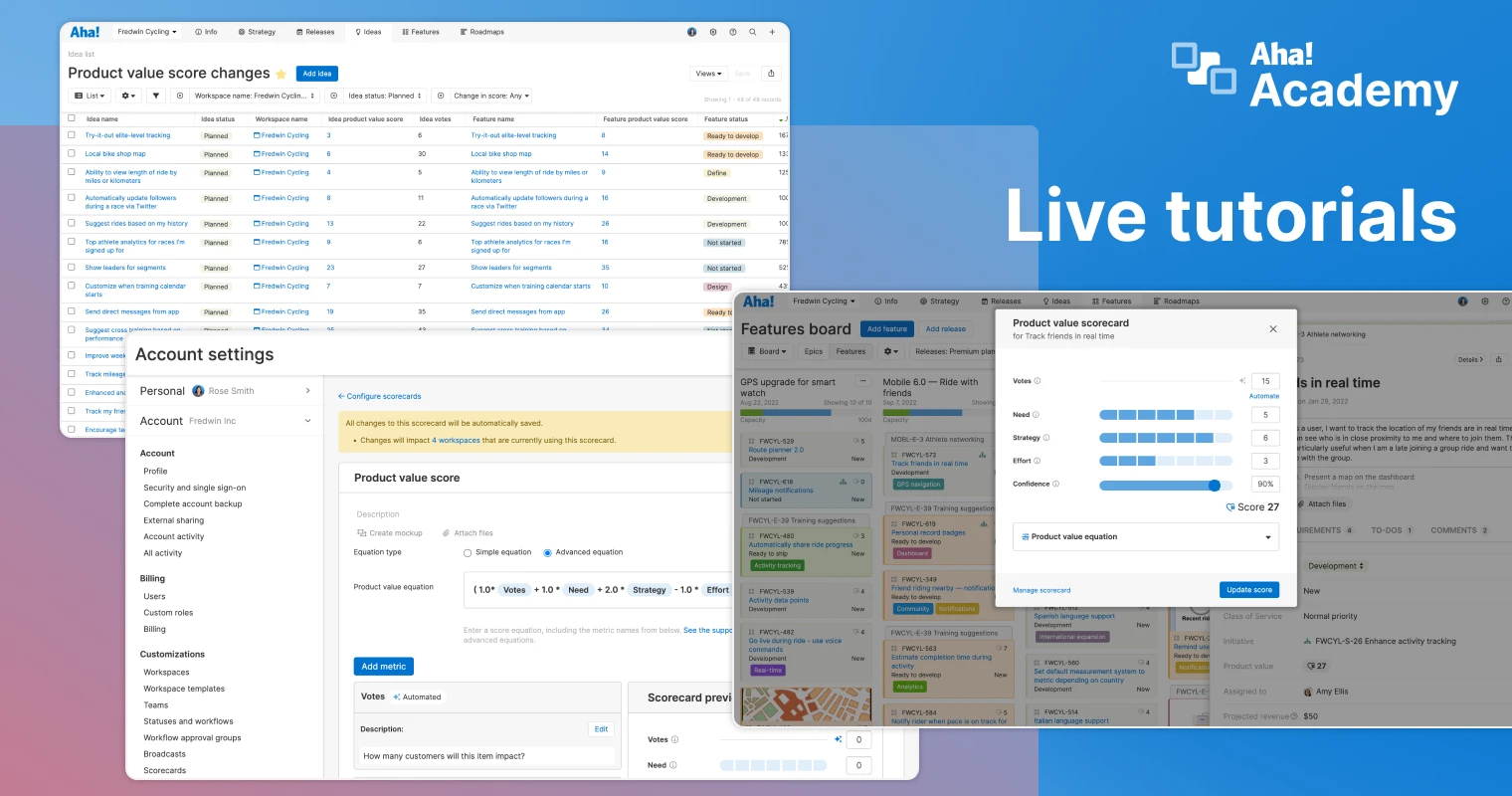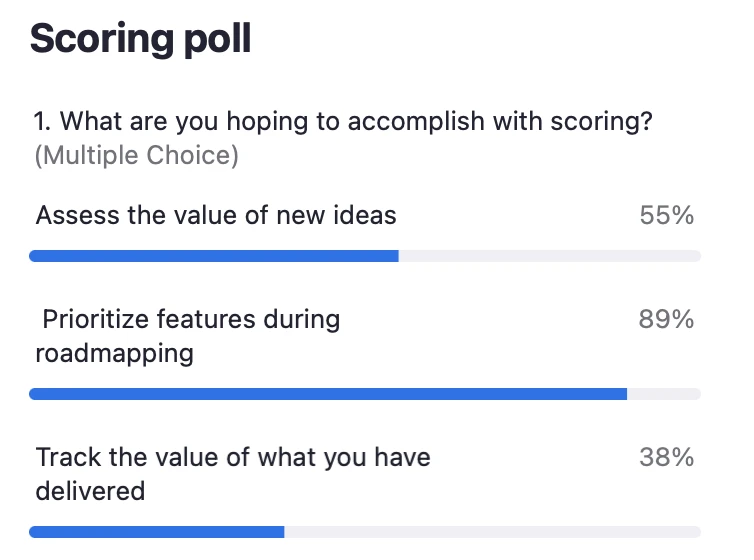
A snapshot of the views you can build in Aha! Roadmaps | Aha! 2022
Aha! Tutorial Highlights: Learn the Newest Way To Score Features
Successful product teams are powered by great strategy and plans. This is why we offer product management training through Aha! Academy and regularly host live tutorials — helping you use Aha! software to build better products. Of course we hope you can attend our tutorials live — it is the best way to learn from our product experts and ask questions in real time. You can also visit our Knowledge Base to brush up on recent tutorial topics.
In our latest tutorial, Aha! experts Bonnie Trei and Erik Johnson covered the best ways to score and prioritize ideas and features using the new Aha! product value scorecard.
Read on (and watch the recording) to learn how to shift decision-making in favor of delivering real value.
Sign up to hear about the next live tutorial
Inefficiencies in product development lead to wasted time and effort. But here is the thing — reducing software waste is not just about agreeing on what to build next. Making decisions based on the value provided to customers and the business actually makes us better product builders too — helping to prove that what you are working on is what really matters.
Enter the new product value scorecard. You can use it to quantify the value of ideas and features using consistent and comprehensive metrics, such as:
Population: How many customers will it impact?
Need: How important is it for those who require it?
Strategy: How closely connected is this to the company/product strategy?
Effort: How much work will it take to build?
Confidence: What is the level of confidence in each score?
The default product value formula is (1.0 * Population + 1.0 * Need + 1.0 * Strategy - 1.0 * Effort) * Confidence. Of course, you can also customize the scorecard with metrics that are important to your team as well as change the formula to give some metrics more weight than others.
Idea and feature scoring has always been part of Aha! Roadmaps — what makes the new value scorecard particularly beneficial is that its metrics are carried through from ideas to features. This means you can score value at multiple points in product planning — refining the score as you learn more about scope and effort.
And that is just what tutorial attendees said they hoped to do when Bonnie and Erik posted the following poll:
With this in mind, Bonnie and Erik zeroed in on best practices for using the product value scorecard with a helpful mnemonic: Assess, Adjust, and Analyze. Let's take a look:
Assess the potential value of new ideas
Begin by estimating the value of a new product idea in Aha! Roadmaps. At this early stage, your estimation will be rough. The point is to quickly decide if an idea is worth pursuing or cutting. And as you compare scores across ideas, you will easily see which ideas rise to the top and deserve more exploration. If you are a customer on the Aha! Enterprise+ plan, you can even create automated scorecard metrics to remove guesswork.
Watch Erik give an idea an initial value estimate
Adjust the score during roadmap planning
Great ideas turn into great features — now the same product value score is consistent across ideas and features. As you gain a clearer understanding of scope and effort, adjust your score (and confidence level) as needed. Scoring makes release planning easier too. Sort the features in your backlog by product value score and move top scorers into an upcoming release. Now you can be sure that you are investing in work that supports customers' needs and your core goals.
Learn how to adjust the score on a feature
Analyze product value over time
See how product value scores evolve by creating custom reports. For instance, you might want to pull a report of all shipped features and compare their idea scores to their feature scores. If the product value score dropped significantly, why was it still shipped? If the score increased significantly, what changed? These can be good conversation starters for how you plan and make progress as a team. It is also worth noting that you can create reports based on individual scorecard metrics — like (low) effort or (high) need — to help identify quick wins.
See how to create a report on product value score changes over time
Lead product development with conviction and ship lovable features.
Value-based product development can be incredibly rewarding — once you establish an organizational definition for product value and measure that value at multiple stages. The more that you estimate, score, and check your assumptions? The more you will learn about delivering real value to your customers.
Have questions about what you see here? Let us know how we can help or schedule a demo. And we would love to see you at the next live tutorial — choose the "Notify me" option to hear about upcoming tutorials.
Use Aha! and be happy. See for yourself — start a free 30-day trial.





